During the Game Tour of Tibet, the Players encountered the image of the wheel of Life (or the Samsara wheel) having a description, which we attach in this article.
- Samsara is not in itself the external world or life in general, but our interpretation of the world and life.
- Samsara is life in the form in which we live it in a state of ignorance; this is the subjective world that everyone of us creates for ourselves. In this world there is good and evil, there is joy and suffering, but they are all relative, not absolute; they can be determined only in the relationship between themselves, and they constantly change, turning into their opposites.
- Samsara seems omnipotent and all-encompassing, but in reality it, like the dream world, is generated by the state of our consciousness and can dissolve without a trace, as the dream disappears upon awakening.
If we awaken from the dream of samsara even for a moment, the world will not disappear, but will appear to us in its true essence - pure, radiant, sacred and indestructible.
Samsara is walking in a circle.
The "wheel of life" depicts a picture not only of human life, but of
life in general, in all its innumerable variants, possible within the
limits of the six worlds-life, infinitely passing from one form to
another, from one type of consciousness to another.
In the ordinary sense, the six worlds are the six types of existence in which intelligent beings can degenerate.
In
this life we were born people, but theoretically the fruits of our
past actions could lead to rebirth in any of the other worlds. Actions committed in past lives determine our physical incarnation,
the corresponding states of consciousness and the type of world
perception.
The body, consciousness and the environment are inextricably linked with each other.
For example, we can not find ourselves in the body of an animal,
preserving the human consciousness: first we must acquire the animal's
consciousness and begin to perceive all of our environment from the
point of view of the animal.
Among those who do not perceive Buddhism as true faith, there is a misinterpretation of karma. It is accepted as a consequence of all human successes or failures. But, this is not so. It
is because of a misunderstanding of the root cause - people who are far
from Buddhism can not change their karma, and, therefore, life for the
better.
- Karma can not be a consequence, it is only the cause of what happens to all living and existing in the universe. Karma is the principle of the consciousness of the essence, and this principle is the reason why something happens to us or someone else.
According to the
beliefs of Tibetan Buddhism, the consciousness of the deceased person
(in our understanding it is the soul of a person) falls into a special
state or in a place called Bardo. It is here that we can see the existence of a clear light of truth - the Dharmakai.
But our karma allows us only to observe this place, and not to go there. Our karmic desires pull us down and lead to a new rebirth.
- While in a state of death, our consciousness begins karmic visions after a certain time. Later it gradually begins to approach the world of the living and to observe the couples performing the marriage ceremony.
- And our consciousness, based on our own preferences, predetermines the future parents of their own flesh, then falls into the womb to the mother. Thus, getting into the wheel of samsara, continues the cycle of rebirth.
Our rampant desires, sent to us by our karma, force us to regenerate
again and again in the world of life-giving beings who have a body.
The actual life, symbolically depicted in the circle, shows all stages of human development from birth to death. Considering
all the twelve links that are mutually dependent in their origin,
clearly demonstrating the fundamental principles of the existence of
Samsara, we can personally observe, understand and comprehend
everything, starting with our own ignorance. It is our ignorance that leads to the generation of all those states
of consciousness and suffering that condition our existence.
All these twelve positions have a definite interpretation. But, we will start from the center.
Directly the center of the wheel is occupied by three symbols (creations), which signify the absence of feelings and have a disastrous effect on a person's consciousness. It's a pig, a cock and a snake biting each other by the tail, and thus connected to each other in an indissoluble chain.
- The black pig here represents greed, ignorance and dark ignorance, which corresponds to the illusory nature of the human ego.
- A red cock is a symbol of carnal passions, greed and attachments.
- The green or dark serpent, in this case, symbolizes anger, envy, hatred and disgust.
And united, they demonstrate the vices, illusions and feelings with
which the human world is filled and in which it is forced to exist.
These hereditary principles of ignorance, repulsion and attraction,
lead people to the fact that they as a result commit acceptable or
extremely unacceptable misdemeanors, which lead to the accumulation of
positive or negative karma.
In the future, it depends on which, in the six worlds, the next degeneration of the living being will take place.
Although
there are a lot of types of karma that accumulate under the influence
of destructive emotions, yet they can be grouped into two categories
related to the karma of good and evil. To the left of the wheel center is a white side, symbolizing positive karma. It shows the monks and laymen who are moving upwards, to their rebirth in the higher worlds. On the right is a part of a dark color, indicating a negative karma. Here, figures of naked people are depicted, which, when descending, are regenerated in the lower worlds. These
two halves of the second circle of the wheel of rebirth symbolically
demonstrate that those who dwell in the higher worlds ascended there,
following the white path. And those who found themselves in the lower spheres of existence achieved this by following the sulfur path. That is, already in this lies the truth, indicating the causes of human misery and dissatisfaction.
The next circle is divided into six equal parts, each of which shows the options of a possible human being after his death. The
world of the gods crowns the Samsara wheel, the karma of pride fills
it, to the right of it is the world of the demigods, with karmic desires
of envy, to the left of the world of the gods is the world of people,
consisting of the world of karmic attachments.
1. The Adas
2. The World of the Hungry Spirits
3. The World of Animals
4. The World of the Demigods
5. The World of Gods
6. The World of People
In each fragment of the wheel, one can detect the presence of a Buddha image.
In the end result, this image helps all participants in the Samsara wheel to achieve liberation and the subsequent attainment of nirvana.
On the outer circle of the wheel there are paintings of existence, in the number of twelve pieces, each of which is a symbol of a separate moment from a person's life.
- Thus, a picture depicting a woman in the process of giving birth is a symbol of the birth of a new life, a period of her growth and becoming. The pregnant woman shown on the next, just represents the state of becoming, with the act of appropriation and the continuation of the mortal life.
- The next picture, depicting people tearing fruit, symbolizes the clinging of a person to life, an appropriation that leads him to the desire to live.
- The scene depicting the process of drinking, is a symbol of an irresistible lust for life, which leads to experiencing feelings.
- The arrow stabbed into the eye of man - such an image we see in yet another picture. This is nothing more than a symbol of sensations and feelings. It is the feelings that make us contact all of us around us.
- The kiss of a couple in love, personifies contact and sensations that draw people into the world of feelings.
- The depicted house with a lot of empty windows symbolizes the senses and senses that create the personality.
- People swimming in a boat are a symbol of the very existence of the personality, its name, form. All this in combination leads to the birth of consciousness.
- Also, looking at the Samsara wheel, we can see a picture of a monkey on a tree and tearing its fruits. This is our consciousness, which leads us to the satisfaction of our simplest impulses
- .The potter, imprinted on his work, symbolizes our actions, in which we embody our desires. At this our impulses we produce with a complete lack of knowledge.
- And the blind old woman, in the next picture, just shows us the lack of knowledge, as well as our blindness and ignorance, which as a result lead us to death.
- And the finishing touch in this whole picture is a scene with a picture of a coffin and a funeral procession. This is our aging, death and subsequent suffering, after which we come to our new rebirth.
- More structured about the 12 symbols located around the circumference of the Wheel of Samsara:
THE TWELVEOUS CHAIN OF THE INTERDEPENDENT ORIGIN
In the outer circle, we see twelve different images that symbolize the twelve-link chain of interdependent origin.
1. Because of ignorance, we create contaminated karma. The image of a blind old man here is symbolized by ignorance.
2. The image of the potter symbolizes contaminated karma. Because of ignorance, we perform many different actions. And in itself action is karma. Whatever actions we take, in a moment it leaves an imprint in our minds.
A more strict terminological name for the second link is accumulated karma.
3. Some may erroneously think that consciousness is the product of karma. Do not think that actions generate consciousness, it is not. Action gives rise to imprint in consciousness. Monkey, tearing fruit, symbolizes here a consciousness with prints. The monkey symbolizes consciousness, and the fetting of the fruit is that the action leaves a mark in the mind.
4. The symbol of the fourth link, which is called the name and form - a man with a paddle, sitting in a boat. Name and form are our five Skandhas.
5. The fifth link - a house with six windows - symbolizes the six pillars of sensory perception. In fact, these are the foundations on which sensory perception functions.
6. Two embracing people symbolize the contact - the sixth link.
7. The person who hit the eye with an arrow symbolizes the seventh link-sensation.
8. The person who holds many different things in his hands symbolizes the eighth link - passionate desire, or attraction.
9. A man tearing fruits from a tree symbolizes the ninth link - clinging.
10. The hen, hatcher eggs, symbolizes the tenth link - existence.
11. A woman who gives birth to a child symbolizes the eleventh link of the chain - birth.
12. The last picture shows an old man and a corpse, which symbolizes the last, the twelfth link of the chain - aging and dying.
These twelve images represent a twelve-link chain of interdependent origin through which we rotate in Samsara.
- After Samsara, or as a version of Samsara in literal translation, it sounds like rebirth, a series of transitions or life.
This
wheel is also known as Bhavacakra, it is also called the wheel of life,
the circle of existence, or becoming, or rebirth, and, perhaps, you
will meet it under the name of the wheel of suffering. All this is about him, about the wheel of Samsara. Thus,
Indian philosophy interprets the continuous cycle of new degenerations
of individual life processes, which includes all the sufferings inherent
in human existence. And you can be freed from them only by penetrating into nirvana.
According
to the wisdom of an Indian saying that has existed for many centuries,
where it is said that wherever we look, we will see everywhere only
passionate desires, aspirations and attachments leading us at a frantic
pace in pursuit of pleasure, to a hasty retreat before pain and death, to surround us with emptiness and heat, destroying our desires.
- Our world is filled with attachments and changes. All this is the essence of Samsara.
A person who aspires to achieve perfection is a person who is destined to go beyond the wheel of Samsara.
- In the upper part, located outside Samsara, is the kingdom of Luo Mustang or the heaven of Tushita. They symbolize the upper chakra of the earth, the pure land of the Buddha, leading the human community to perfection.
- The wheel of Samsara is the personification of all that everyday and what is around us in our daily life.
- Sansara is an inseparable chain of conscious visions, which were caused by karma inherited, that is, by life.
Thus, having realized the whole essence of the wheel of rebirth, we can stop our suffering.
- Gradually, step by step, refusing negative actions leading to the accumulation of destructive emotions, we learn the true path that will lead us to spiritual rebirth.
- And we need to start with the realization of ignorance, as the underlying cause of our suffering.
- Next, you need to exercise your mind in recognizing impermanence and death.
- After that, we must carefully analyze all our actions and actions. We must separate the good deeds from the unseemly.
- Then, directly following the chosen path, we will undoubtedly achieve that we realize the absence in Samsara of that goal that would be worthy of our possession. We will become impervious to an all-pervasive nature, bearing constant dissatisfaction and suffering.
- And, based on the newfound sense of renunciation that will come to us along with this awareness, we will come to perfection in the practice of morality.
- Thus, by bringing our rough, external distractions to a calm state, we will increasingly develop in the practice of contemplation, while at the same time more and more pacifying subtle, internal distractions.
- After that the liberation of one's consciousness from the lack of freedom that is inside us will follow.
And then we will improve ourselves in the practice of discriminating wisdom.
This practice directly gives knowledge of the importance of the absence of the existing nature of personality and phenomena. So, gradually, we will exhaust all accumulated in us destroying emotions.
- Having freed ourselves from all spheres associated with dissatisfaction and suffering, we, at last, will gain peace and freedom.
- This is the study of the symbolic image of Samsara's wheel.
But in order to preserve the full picture of the image of the circle, it should be noted that directly under the wheel are inscribed words, combined in two quatrains.
- In the upper left corner, we see the Buddha pointing to the full moon. This path is a symbolic path of truth.
- And the moon, the true symbol, Where all our sufferings will cease.
Therefore, it is necessary to look at the picture in its integral image. Since, both above and below, one can find direct indications of the positive qualities of obtaining freedom.
There is also a legend about the origin of the Samsara wheel, which in the interpretation of the scientist-researcher AMPozdnev reached our days in this form: "The basis for the origin of this very image of the wheel of Samsara was the narrative of the Buddha Shakyamuni. According to this narrative, one of Shigemunia's most ancient disciples, Mutgalvani, was concerned that he was working to save his mother. He step by step penetrated into all the worlds in which his mother's rebirth occurred. And so he happened to be in each of the twenty worlds of hell. He also managed to visit the kingdom of the birits, too, and did not overlook the worlds of animals and people. He had to visit the kingdom of the Asurians and the Tengrias (gods and demigods). On this journey, he was accompanied by one of the first disciples of the Buddha - Shariputra. After completing the case for saving the mother of Mutgalvania, the disciples came to their Teacher Buddha and began their narrative. At first, their listeners were their four friends, who were subsequently joined by all the disciples and followers of the Buddha's teachings. Travelers, without hiding, told about everything they saw, including the sufferings that filled each of the worlds they saw.
- Then the Buddha wished to keep a detailed narrative, so that it served as an unrelenting instruction for all the believer, who lived, lived and who only had to live. And it does not matter in what part of the earth and at what time they would exist. The teacher instructed the disciples to paint the existing state in all the worlds and kingdoms that they saw. "
It
is in this form that the image of Samsara's wheel, where the worlds of
gods, asuras, people, animals, demons and inhabitants of hell, is
inextricably linked and interdependent. This is the fundamental principle of creating a circle.
And
it is the karmic desires, so accurately depicted in the Samsara wheel,
that lead people to a permanent rebirth in the spheres embodying
punishment. All these areas are located within the circle and, as we have already
explained, punishments are shown in the form of animals, hungry ghosts
and inhabitants of both versions of hell.
It is believed that the beings inhabiting these worlds do not earn their future karma, but serve it. And
the presence in each of the worlds of the merciful and compassionate
Buddha of Avalokiteshvara, gives everyone hope for salvation. And
those who fiercely strive to eradicate the three venomous and vicious
root causes-malice, lust and ignorance-are able to reincarnate in one of
the more tranquil worlds where gods, demigods, or humans dwell.
- But only a person is destined to earn positive karma, and breaking the shackles of the circle of samsara, to attain the state of nirvana, that is, the state of the Buddha.
- However, this is not so easy. Although to strive for excellence is necessary all the time.
- And although there is an opinion among the greats that it is almost useless and not thankful to explain to ordinary mortals the concepts of the versatility of worlds and universes, for the human mind is still unable to understand and accept all the explanations that are found in the treatises of the Great Teachers, nevertheless, comprehend science follows. Since knowledge within us, then opening them the way to the exit into the external world and the universe surrounding us is the task of our earthly existence.
- Only the knowledge gained will help the person to find himself in the mainstream of the generalizing time flow among the multidimensional conditions.




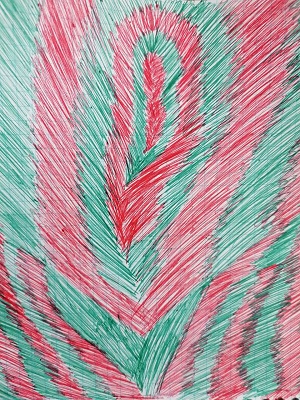



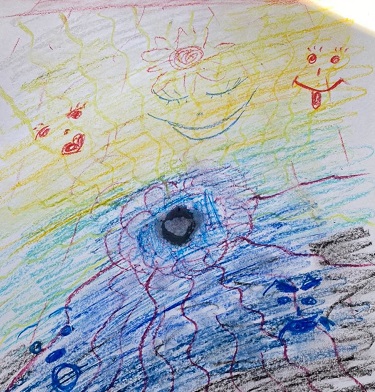


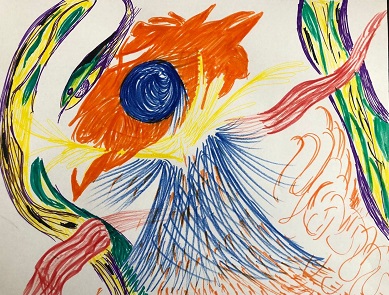

















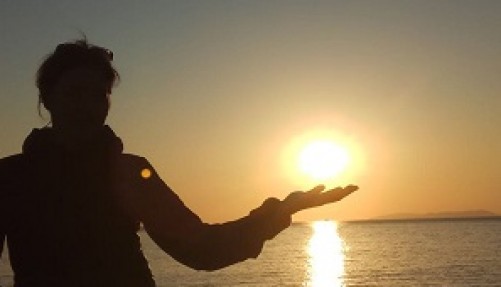

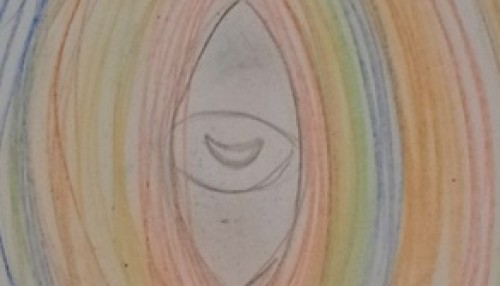



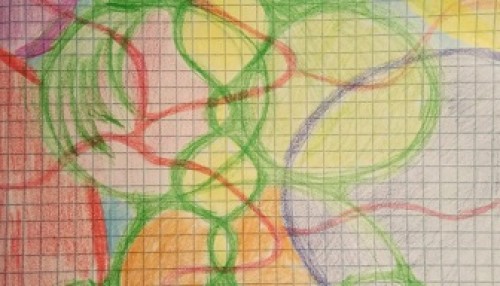
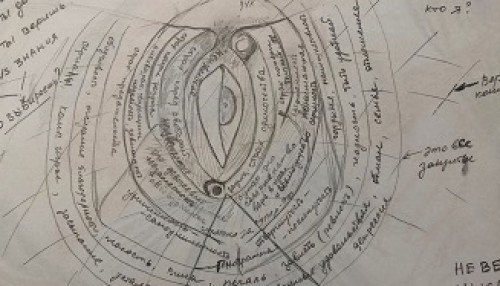
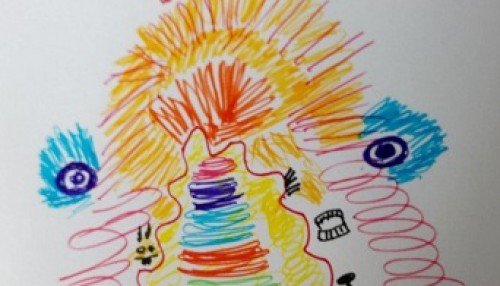




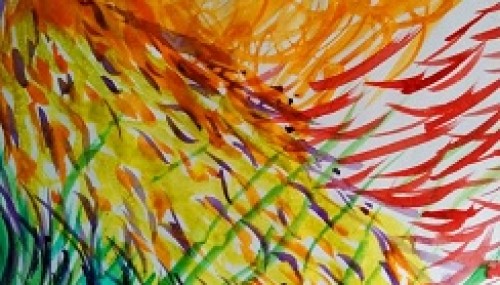
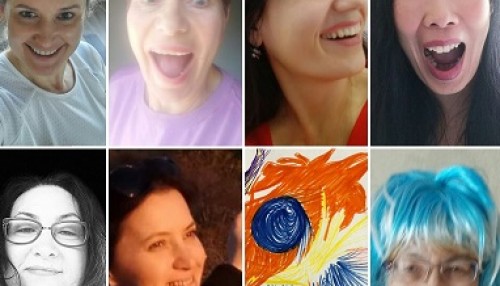



🙏😘💕
21.11 07:32
06.07 01:23